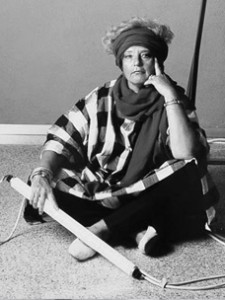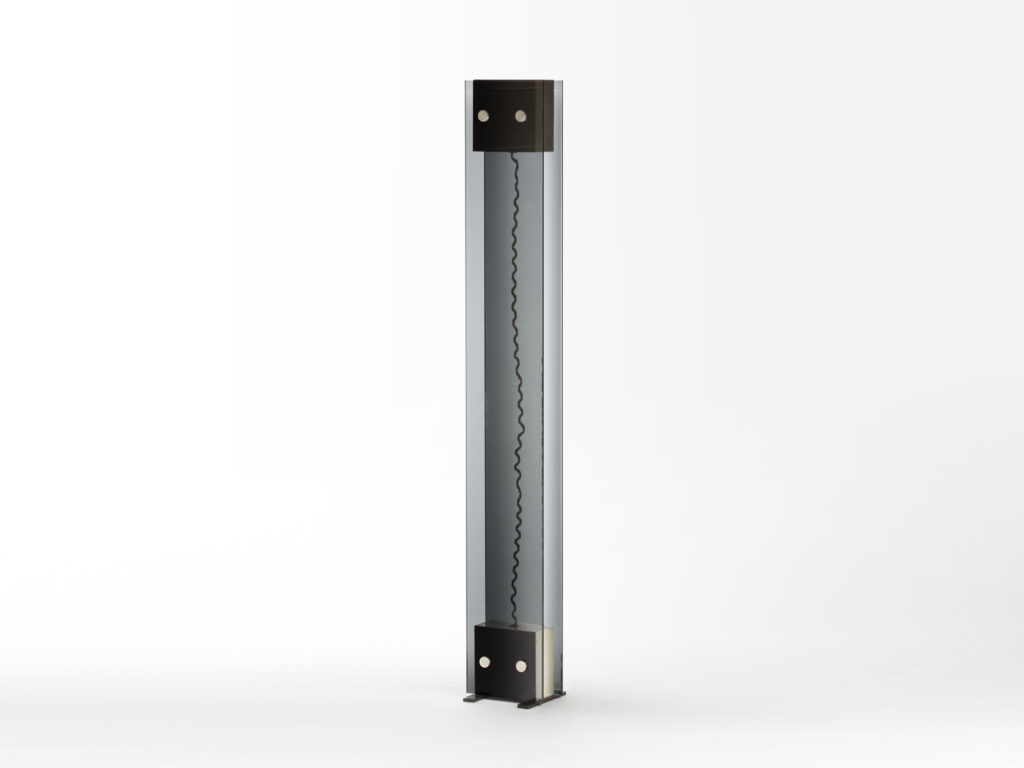
VIGO Nanda
born in 1936
Italy
Originally from Milan, Nanda Vigo trained at the École Polytechnique de Lausanne. With the Zero group founded by Heinz Mack and Otto Piene in 1957, she quickly exhibited in various museums in Europe before opening her studio in 1959. She then became famous for her optical sculptures mixing glass and aluminum. At the same time, she led architectural projects: the Rozzano cemetery in 1959 and the Zero House in Milan, which she completed in 1962. It was during the 1960s that she introduced a new concept of lighting using innovative materials made of mirror, glass and neon, which Vigo used to create radical and minimalist objects for Arredolucedans. She participated in numerous fairs, such as the Milan Triennale in 1964, and collaborated with major design and art figures including Gio Ponti and the representatives of Arte Povera Piero Manzoni and Lucio Fontana. Nanda Vigo received the Milan Industrial Design Award in 1974 for the Golden Gate floor lamp, one of the first halogen lamps in Italy, designed in 1970. She also produced residential projects for private clients during the 1970s, such as the Casa Museo Remo Brindisi in Lido di Spina near Ravenna. From the 1980s onwards, Vigo continued to participate in major events such as the Venice Biennale in 1982 and collaborated with numerous publishers including Arredoluce, Kartell and Driade.
Pièces disponibles
Archives
No data was found
